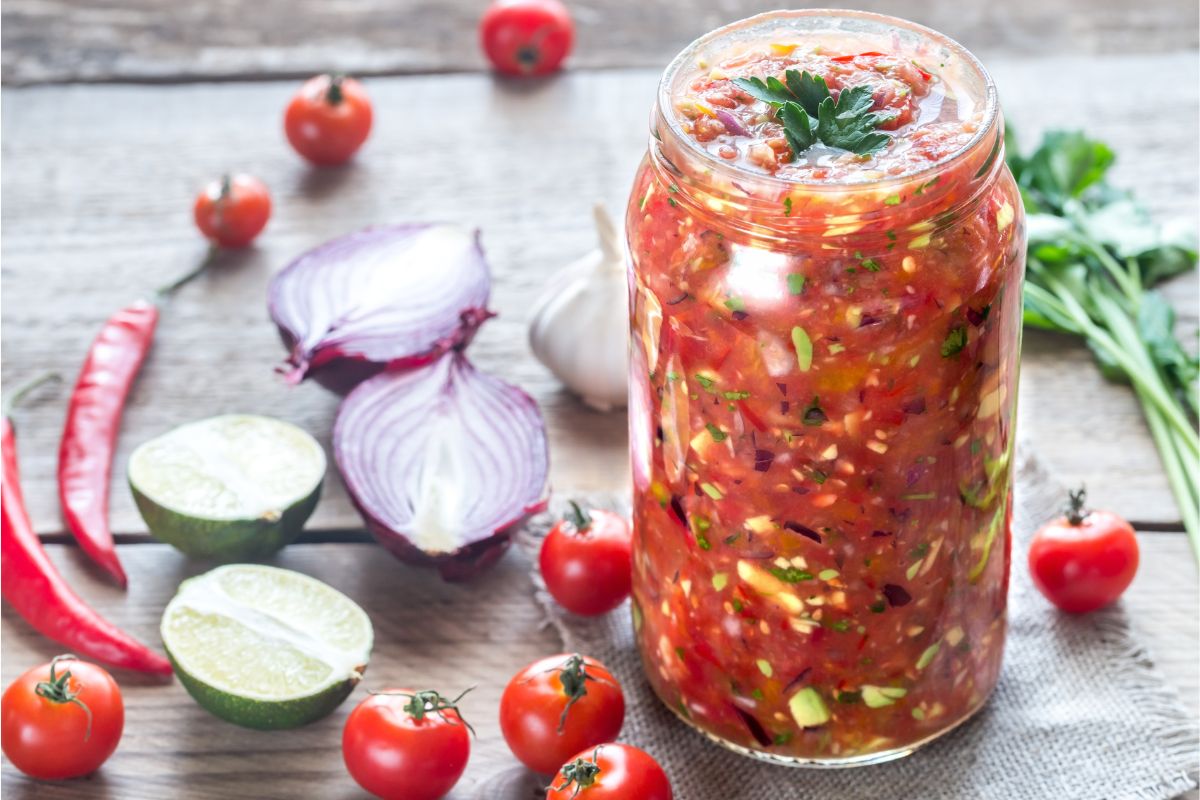The National Center for Home Food Preservation does not recommend canning fresh salsa without cooking it first due to a lack of tested recipes. To can uncooked salsa, pack it cold into sterile jars and process it in a water bath canner for 15-40 minutes, adjusting for altitude. Store the canned salsa in the fridge or refrigerator.
Do You Have to Cook Homemade Salsa Before Canning?
Yes, cooking homemade salsa before canning is advised because heating is the most practical way to sterilize canned foods for long-term storage at room temperature. There are currently no official home food preservation experts that recommend canning salsa using the raw or cold-pack method.
To can fresh salsa without cooking it, you must first pickle it with canning salt and acidify it using 5% vinegar or 2-3% bottled lemon juice or lime juice. Pickling raises the saltiness of food while lowering the pH of food to inhibit mold and bacterial growth.
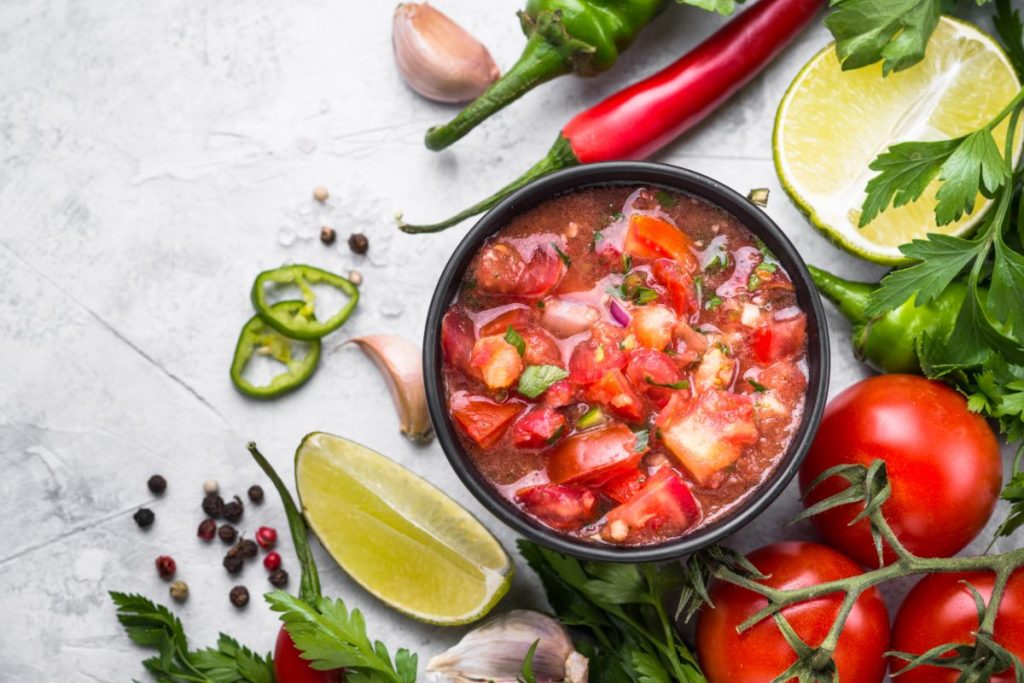
Reasons Why Cooking Salsa Is Better for Canning
While some home canners have successfully canned fresh uncooked salsa, the canning process has not been established and may be unsafe.
- Canned food cooks during the canning process in both water baths and pressure canners, so preserving the texture of fresh salsa isn’t feasible.
- Cooking salsa before canning saves you time because canning uncooked salsa requires longer processing times.
- If you must can fresh salsa without cooking it, ensure the raw salsa has a pH below 4.6 for safe water bath canning. If the salsa is less acidic, a pressure canner is better to prevent bacterial spores from growing.
- Most salsas incorporate low-acid foods like peppers and onions with acidic foods like fresh tomatoes. It may not be easy attaining ideal pH levels for safe canning.
- There are no tested and approved recipes for canning fresh uncooked tomato salsa or tomato paste salsa. The NCHFP has a tested recipe for pressure-canning low-acid Mexican tomato sauce, which isn’t as chunky as salsa.
- Untested fresh salsa canning recipes produce food that can only be refrigerated for a few weeks or frozen for up to one year. When refrigerated, it’s best to consume the salsa in 10 days.
Fresh Pack Homemade Salsa Canning Recipe
The NCHFP advocates against experimenting with canning salsa recipes with low-acid vegetables, even when acidified with lime juice or vinegar. If you wish to can your own homemade salsa and forego using a tested recipe, here are the process steps for canning homemade salsa:
- Collect all the necessary fresh farm produce, such as green tomatoes, red tomatoes, peppers, and onions, for your salsa. Gather optional spices and herbs like cumin, garlic cloves, oregano, or fresh cilantro to boost the flavor.
- Gather high-acid ingredients to lower the pH of the salsa. Options include vinegar with 5% acidity or bottled lime or lemon juice with 2-3% acidity.
- Get your canning equipment ready. Wash the screw bands and canning lids, and jars with warm water and soap. Rinse them in warm water.
- Sterilize pint or half-pint jars by submerging them in simmering water and boiling them for 10 minutes. Remove them from the water and let them cool to room temperature, ready for cold packing.
- Prepare your boiling water bath canner. Place a canning rack inside and pour cold water over it to fill the canner halfway. Turn the stove on to heat the water.
- Prepare your ingredients to make the salsa. Clean the vegetables and herbs under cool running water. Skin, de-seed, and dice the tomatoes. Peel, de-seed, and chop the peppers. Peel and dice the onions.
- Mix the ingredients, including the herbs and spices. Add pickling salt for flavor and to raise saltiness. Acidify the salsa with 5% vinegar, lime juice, or bottled lemon juice.
- Ladle the cold salsa into cold, sterilized jars and leave ½-inch headspace. Use a plastic or wooden spoon to remove air bubbles.
- Wipe the jar rims with clean towels dampened with cold water.
- Center new lids and screw bands on the filled jars and close them to a fingertip-tight position.
- Place the jars in a hot water bath canner. Let water cover the tops of the jars by 1-2 inches.
- Bring the water to a boil and process the jars for 15 minutes, adjusting for altitude. The processing time may be as high as 30-40 minutes.
- Once the time lapses, take the canner off the heat. Let the jars rest in the hot water for 10 minutes before taking them out.
- Cool the jars at room temperature for 24 hours on a towel-covered countertop before testing the seals. Proper seals won’t flex when you press them downward.
- Remove the screw bands, and label the jars. Store properly sealed salsa jars in the refrigerator and use within ten days or freeze and use within one year.
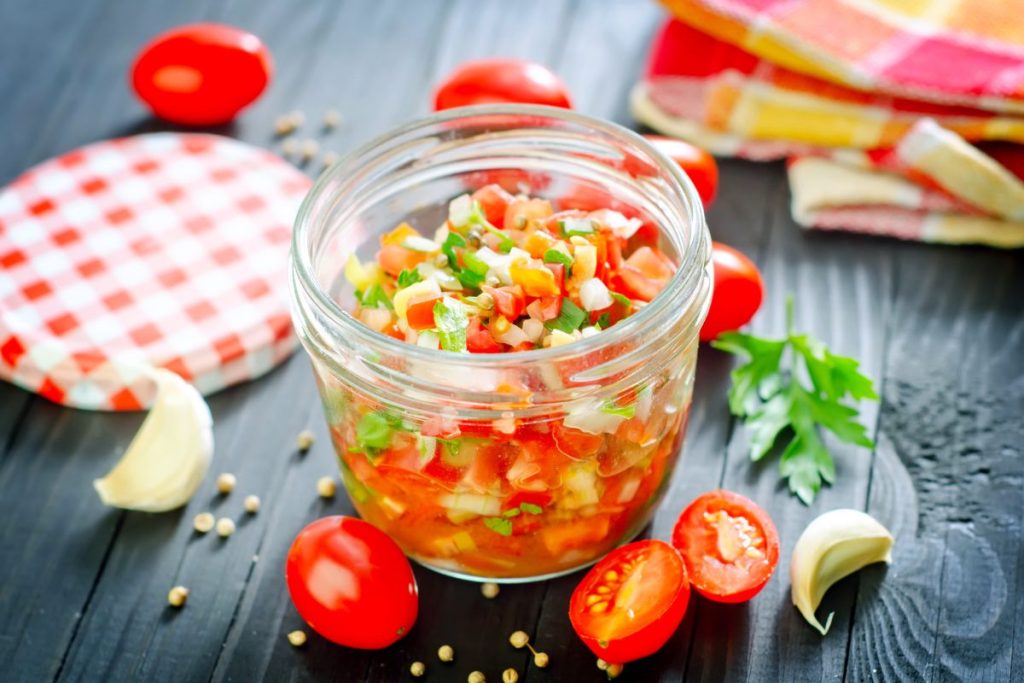
Should You Peel Tomatoes Before Canning Salsa?
Yes – it is advised to peel tomato skins before canning salsa. Tomato skins can be bitter and tough, though some home canning enthusiasts don’t mind the bitter flavor.
How to Remove Skins from Tomatoes for Salsa
Blanching is an ideal method for removing the skins from tomatoes quickly and easily. Blanching is a two-part process that involves dipping the tomatoes briefly in boiling water and then immediately in ice water.
Blanching the tomatoes won’t cook them through, but it will loosen the skin to make peeling easy. Dunking the hot tomatoes in ice water stops the tomatoes from cooking and splits the skins.
- Bring 8-10 cups of fresh water to a boil in a large pot.
- Dunk clean tomatoes into the boiling water for 30-60 seconds or until the skins split. To reduce the dunking time, make a cross shape on the bottom of each tomato with a sharp knife before submerging them in the water.
- Remove the tomatoes from the boiling water and immediately transfer them to an ice bath.
- Remove each tomato from the ice bath after 2 minutes, and use your fingers to remove the skin from the flesh.
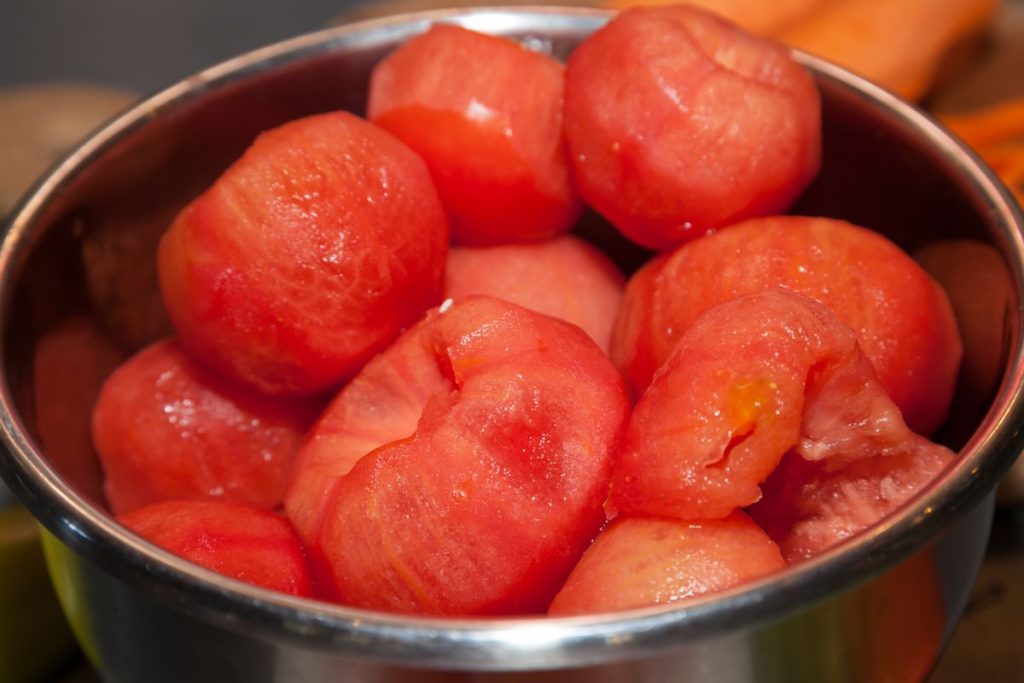
What are the Benefits of Canning Salsa?
The following are key benefits of canning salsa:
- Canned salsa is a source of vitamin C, potassium, and carbohydrates.
- Canning food frees up valuable refrigerator space.
- Canning salsa preserves it for later use to prevent food waste.
- Homemade canned salsa is free of commercial preservatives.
How Much Acid is Needed for Canning Salsa?
Generally, ¼ cup of bottled lemon juice or lime juice per pint of salsa provides acidification to a pH of 3.8-4.0. However, the amount of acid needed for canning salsa depends on the type and amount of vegetables used in the recipe.
Research conducted by Hillers and Dougherty of the Washing State University Cooperative Extension Service made the following recommendations for hot-pack water bath canned salsa:
- ¼ cup (61g or 60 ml) of bottled lemon juice per pint of 200g Roma tomatoes and 120g onions, 5g table salt per pint, 65g green peppers, and 15g jalapeno peppers. This lowers the salsa’s pH to below 3.82.
- ¼ cup lemon juice for salsa made with 200g Roma tomatoes and either 200g all onions or 200g all green peppers. This brought the salsa’s pH to below 3.82.
- 10 ml lemon juice per 200g vegetables to acidify single low-acid salsa ingredients to a pH below 4.6.
- 60 ml lemon juice per pint (263-304g) of green peppers, onions, or jalapenos alone. This brought the pH to below 3.82.
You can also use bottled lime juice or 5% vinegar to acidify salsa. However, these two options may alter the flavor and aroma of your salsa. Vinegar may cause an unappealing vinegar taste, while lime juice leaves a pronounced lime flavor.
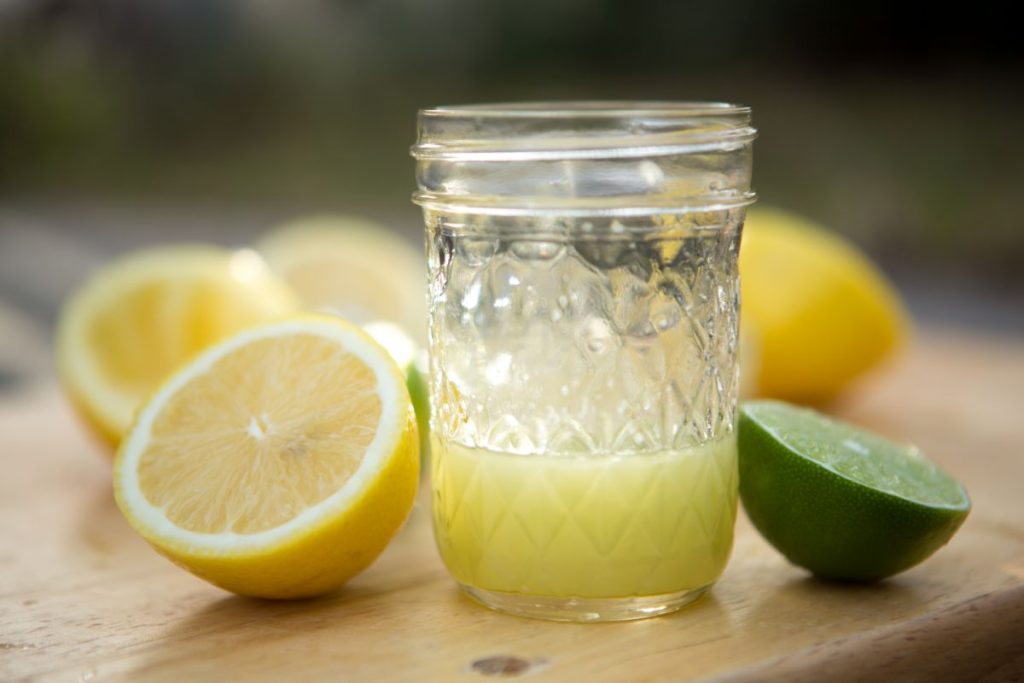
What are the Best Peppers for Canning Salsa?
Fresh peppers with mild to moderate heat, such as jalapenos, habanero, Cayenne, serrano, and banana peppers, are the best for canning salsa. Bell peppers are also ideal for mild salsa, and you can substitute them with any long green peppers.
How Long Does It Take to Can Salsa Without Cooking It?
There isn’t an official processing time for raw salsa. The generally accepted water bath canner timing for both half-pint and pint jars is 15 minutes, but it can be as much as 30-40 minutes, depending on the recipe.
The total time for salsa canning is roughly 25 hours, including prep time, processing, and cooling.
What is the Best Way to Store Canned Salsa?
The best way to store cold-packed canned salsa is to refrigerate or freeze it.
Unlike cooked canned salsa, which is stored at room temperature, raw-pack canned salsa from untested recipes may be unstable at room temperature. This necessitates cold storage conditions and using the salsa as soon as possible.
What is the Shelf Life for Canned Salsa?
Raw-pack canned salsa has a shelf life of several weeks when kept in the refrigerator or up to 12 months in the freezer. For utmost food safety, it is best to use raw-pack canned salsa within ten days.

